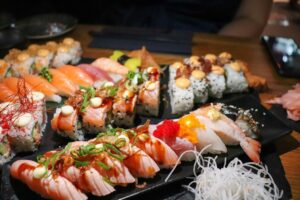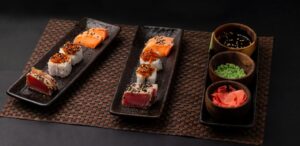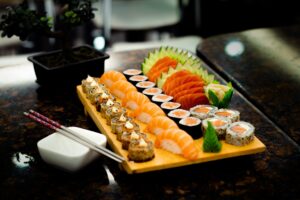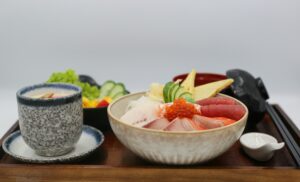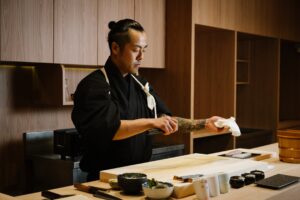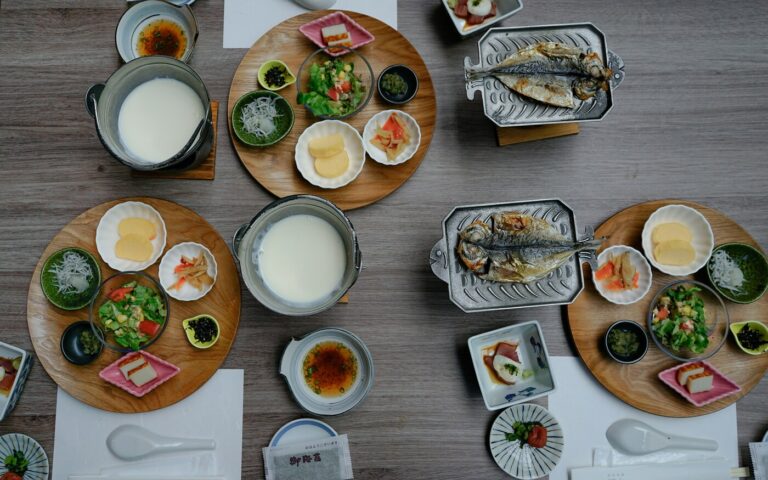
Dishes in Singapore: The Japanese Culinary Tapestry Among Local Flavors
Singapore’s food scene is world-famous, and for good reason. The island nation is a melting pot where Chinese, Malay, Indian, and Peranakan heritages all play a role in crafting its culinary identity. The influence of Chinese immigrants is especially significant, shaping iconic dishes and contributing to the vibrant culinary landscape. Peranakan cuisine, in particular, blends Chinese influences with Malay, Indonesian, and Western elements to create a unique, aromatic, and spice-rich tradition.
Yet, amid this tapestry of flavors, Japanese cuisine has quietly—and sometimes boldly—carved out a unique presence. Today, Japanese dishes in Singapore have transcended their origins, finding enthusiastic fans among both locals and visitors, enriching Singapore’s food culture and hawker centres with new and exciting tastes.
This journey will dive into the ways Japanese culinary traditions have taken root in Singapore. While dishes in Singapore such as chicken rice, nasi lemak, and char kway teow celebrate coconut milk, chili sauce, and local ingredients, Japanese food in Singapore is a blend of subtlety, precision, and the umami spotlight has found new expression here.
The Foundations: Japanese Staples Meet Singapore's Classics
The most iconic dishes in Singapore often begin with humble ingredients: fragrant rice cooked to perfection, rice noodles in spicy broth, and innovative uses of coconut milk. Interestingly, these comforts resonate in Japanese cuisine as well. Walk through Maxwell Food Centre or Adam Road Food Centre, and it’s not uncommon to find Japanese donburi or ramen stalls nestled among icons like hainanese chicken rice—available as both poached and roasted chicken variants—and carrot cake.
Take Japanese ramen—the springy egg noodles, soft boiled eggs with custardy yolk, tender pork belly slices, and spicy sauce—each component echoing Singapore’s love of noodle dishes with savory flavors. Singaporean interpretations often feature local ingredients such as minced pork, fish cake, or even touches of chili sauce and sambal, embracing the local preference for spicy, robust tastes.
Katsudon (fried chicken or pork over rice) is another example. The chicken is breaded and fried until golden brown before being simmered in a soy sauce-based broth and served with soft, steamed rice and onions. You’ll often find karaage (fried chicken) served as a side, highlighting the love for crispy textures familiar from local fried dishes.
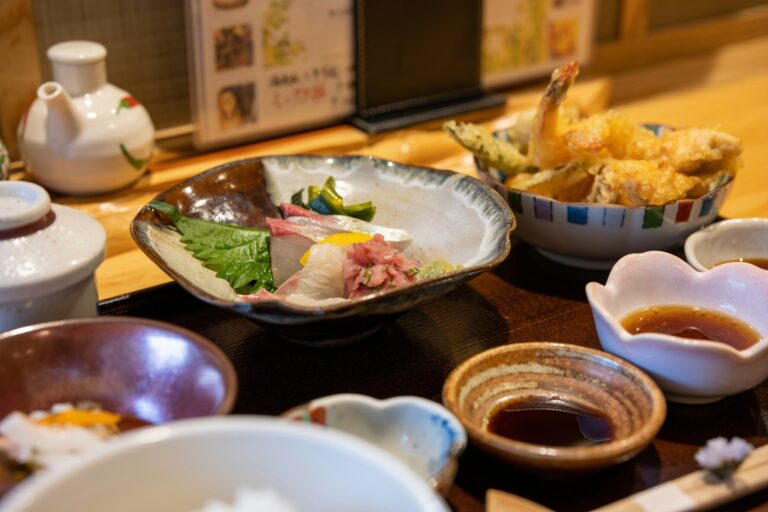
Noodles and Bowls: Where Japan’s Ramen and Soba Join Singaporean Favorites
Noodle dishes are at the heart of both cuisines. For Singaporeans, yellow egg noodles are a key ingredient in traditional Chinese noodle dishes like wantan mee and Hokkien Mee, prized for their springy texture and ability to soak up rich sauces. In Japanese cuisine, ramen’s thick or thin wheat noodles, soba’s chewy buckwheat strands, and udon’s plush, thick rice noodles bring an equal sense of comfort.
Yakisoba—Japanese stir fried noodles with pork belly, bean sprouts, and a drizzle of dark soy sauce—mirrors local classics like char kway teow. Both dishes use wok hei, the breath of the wok, to impart a smoky aroma, complemented by the sweet and savory flavors of oyster sauce and pork lard.

Japanese Breakfasts and Hawker Mornings: A Shared Love of Ritual
A traditional Japanese breakfast of grilled fish, steamed rice, tamagoyaki (egg omelette), and miso soup is a celebration of simple, clean flavors. While this might differ from a traditional Singaporean breakfast of kaya toast, soft boiled eggs, and kopi sweetened with condensed milk, the underlying philosophy is the same: comfort, nourishment, and the gathering of family or friends. Chinese culture has had a significant influence on Singapore’s kopitiam coffee shops, where breakfast foods like kaya toast and soft boiled eggs are integral to local traditions and social life.
Singapore’s hawker culture has introduced Japanese-inspired breakfast sets at coffee shops and food courts. Salmon or saba fish rice bowls, steamed rice cake topped with seaweed and sesame, and even Japanese style egg sandwiches can be found alongside kaya toast and nasi lemak. The combination of savory flavors, especially with soy sauce, umami-rich chili sauce, and coconut jam, reflects a delightful blend of local ingredients and Japanese minimalism.
The Deep Fried Connection: Tempura and Local Fritters
Deep frying is a beloved technique in both Japanese and Singaporean kitchens. In Singapore, fried chicken, carrot cake, and fried tofu make regular appearances at hawker stalls and food courts. Japanese cuisine contributes tempura to the scene—prawns, vegetables, even rice cakes coated in a light, airy batter and fried to crisp perfection.
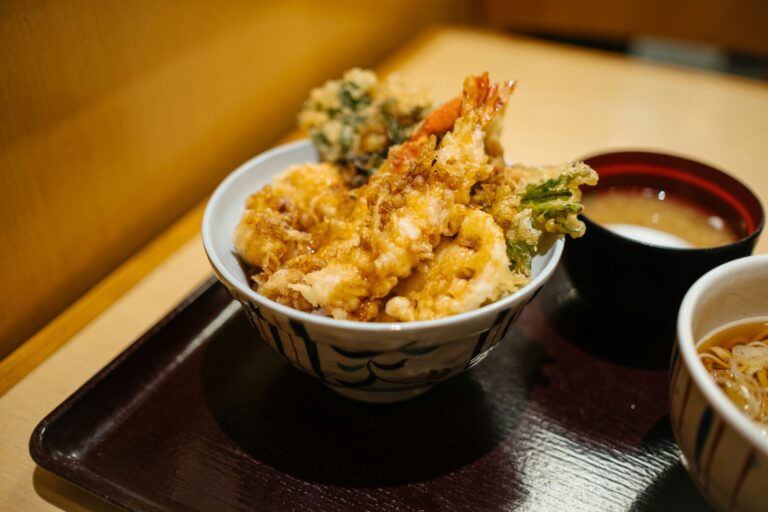
Rice Bowls, Bento, and the Importance of Fragrant Rice
Rice is the bedrock of many dishes in Singapore, be it in hainanese chicken rice or nasi lemak with coconut milk. Japanese cuisine similarly reveres the quality of fragrant rice, often cooked in chicken stock or seasoned lightly with vinegar.
Japanese bento boxes have found favor at Singapore’s best hawker stalls, where a serving of steamed or flavored rice accompanies teriyaki chicken, grilled meat skewers, fried fish cutlet, or even thin slices of beef in a savory soy-based sauce. Toppings like pickled ginger or a soft boiled egg are the norm at fusion stalls in food courts, combining Japanese and Singaporean sensibilities in each flavorful rice bowl.
Sauces are key—dark soy sauce, sweet and savory teriyaki sauce, and rich chili paste are drizzled over pork belly, chicken rice, or even pieces of fried tofu. This careful balance of sweet, spicy, and umami is a hallmark of dishes in Singapore as well as Japan.
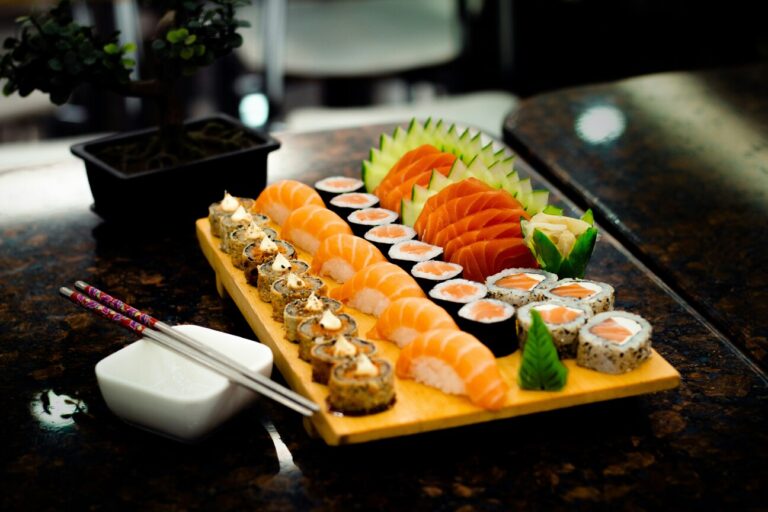
Sushi, Sashimi, and Seafood: Singaporean Takes on Japanese Classics
With Singapore’s love of seafood, it was only natural for sushi and sashimi to become a hit. The freshness of raw fish—salmon, tuna, yellowtail—served over rice or in hand-rolled maki, appeals to Singaporeans accustomed to oyster omelette, fried fish, and the briny delights of chili crab. Chilli sauce is often used as a key ingredient to enhance local seafood dishes and modernize traditional recipes, much like how it elevates iconic dishes such as chilli crab.
At some of the best Japanese stalls in Singapore, sushi platters are joined by local favorites: a side of fish cake, or a sprinkle of fried shallots and spring onions over maki rolls. Hawker versions may even infuse coconut milk into rice or offer spicy sauce for dipping, resembling the creative touches found in Peranakan food and zi char dishes. Regional specialties like Katong Laksa, with its unique creamy broth, and popular venues renowned for their iconic crab dishes—highlight the diversity and innovation in Singapore’s seafood scene.
Japanese Curry and Singaporean Spice: A Shared Passion
Japanese curry rice is a comfort food classic—rich, mildly spicy curry poured over steamed rice and often topped with breaded pork or chicken. In Singapore, it’s not uncommon to find this dish enhanced with coconut milk, accompanied by fried chicken, or given a spicy chili sauce kick.
Fusion stalls and other vibrant hawker centres have found ways to merge Japanese curry with Southeast Asian flavors. Served alongside nasi lemak or as part of a bento with local sides like bean sprouts, fried tofu, or traditional Malaysian chicken curry, this dish consists of everything good about both cuisines: bold spices, rich flavors, fragrant rice, and a hearty portion of protein. The satisfaction of finishing an entire plate of these fusion meals is truly memorable.
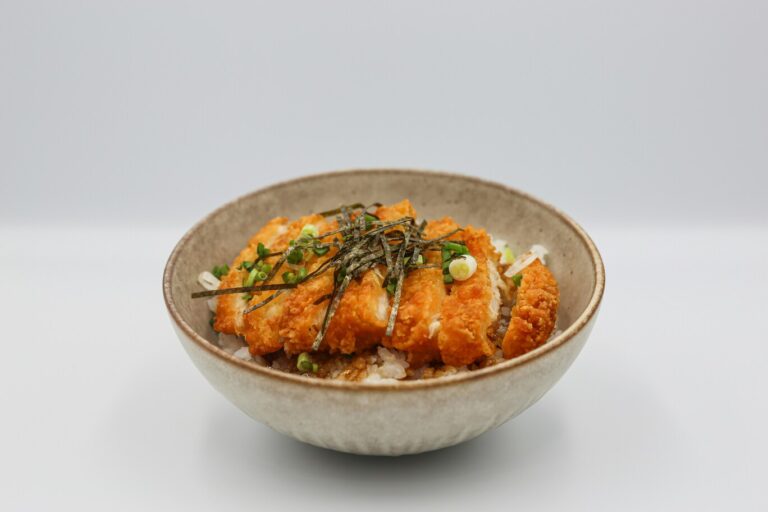
Hot Pots, Broths, and Noodle Soups
If you’ve visited Japanese restaurants in Singapore, you’ll know that ramen isn’t the only noodle dish loved in the city-state. Nabemono (hot pot) has parallels with steamboat and bak kut teh, a peppery pork rib soup adored by locals. Both dishes traditionally feature delicious broth coaxed from pork bones, seafood, or chicken, with tofu puffs, vegetables, and fish cake bobbing on the surface.
Fans of laksa lemak—a spicy noodle soup with coconut milk—will find Japanese-style spicy miso ramen or seafood ramen familiar and comforting. The addition of chili paste, soft boiled eggs, and even grass jelly or pandan leaves as innovative toppings brings together the best of both food cultures. Local drinks like sweet milk tea or the Singapore Sling can round off such meals, highlighting the communal enjoyment of both cuisines.
Street Food Fusions: Japanese Flavors at Hawker Stalls
Hawker stalls across Singapore have reimagined Japanese street food, spawning unique fusions that feel right at home in local markets. Okonomiyaki (Japanese savory pancakes) is filled with minced pork, cabbage, and sometimes even Chinese sausage, then fried over rice flour batter. Drizzled with spicy sauce and mayonnaise, it’s a cousin to Singapore’s chai tow kway and carrot cake—flavorful, eggy, and piled with fresh toppings.
Takoyaki, those golden balls of wheat flour batter stuffed with octopus and cooked to order, captivate taste buds in hawker centres, often joined by local innovations like crab meat, fried hokkien mee, or sweet chili dips. Yakitori (grilled meat skewers), typically found in izakayas, appear at stalls near Chinatown Complex and city hall, drawing crowds for their savory flavors and generous portions.
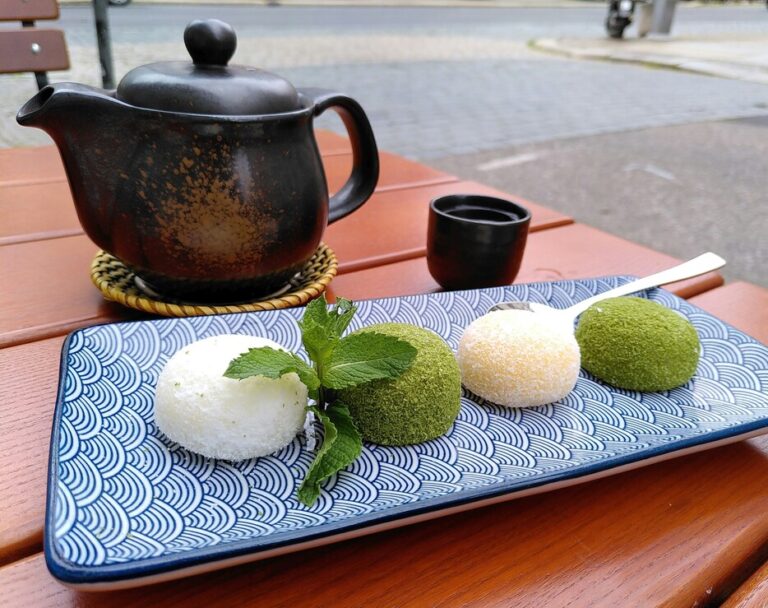
Japanese Sweets and Desserts in a Singaporean Context
Japanese desserts are renowned for their delicate flavors, often built on coconut cream, palm sugar, and soft rice flour. In Singapore, you’ll find mochi, matcha cakes, and kakigori (shaved ice with fruit syrups) at best hawker stalls and at dessert counters in food courts. Many of these treats are adapted to suit local preferences—think pandan mochi, mango kakigori, or ice cream with sweet corn and coconut milk, reminiscent of local dishes like ice kacang.
Singapore has also popularized Japanese cheesecakes and dorayaki (sweet pancakes stuffed with red bean paste), with adaptations such as kaya toast flavors or the addition of peranakan spices. Grass jelly, pineapple juice, and even sweet corn occasionally find their way into parfaits, celebrating the blend of tastes across cultures.
Innovative Dishes, Fusion Cuisine, and Char Kway Teow-Inspired Hawker Creativity
Innovation is at the heart of Singapore’s best hawker stalls and Japanese restaurants. One standout is the Japanese “noodle dish”—cold soba tossed with chili sauce, fried tofu, spring onions, and crispy pork lard, combining traditional Japanese, Chinese, and Southeast Asian flavors. Another popular dish is sashimi over fragrant coconut milk rice, garnished with bean sprouts, chili, and a drizzle of dark soy sauce.
Zi char dishes—Chinese-style stir fries using whatever’s fresh—sometimes get a Japanese twist, with teriyaki sauces or miso-based broths making an appearance and offering a new kind of savory richness. These inventive creations, typically served at open air food courts or modern izakayas, reflect the cosmopolitan, dynamic spirit of Singapore’s food scene.
Where to Eat Japanese Food in Singapore
Seek out Japanese delights at every turn: at Maxwell Food Centre, try the Japanese bento stall serving grilled meat skewers, karaage, and steamed rice. At Tiong Bahru Market, a sushi and donburi counter lines up an array of seafood dishes, from rice noodles topped with fresh shellfish to spicy salmon bowls. Food courts at City Hall and Raffles Hotel’s basement offer handmade ramen, cold soba, and fresh spring rolls. Amoy Street Food Centre, known for its lunch rush, is home to innovative noodle stalls that combine Japanese and Singaporean ingredients for a one-of-a-kind taste.
Don’t miss Little India’s Japanese-Indian fusion café, where curry dipping sauces meet udon, blending the flavors of Indian food—like Dosa and Thosai—with Japanese favorites. This area is also renowned for its Indian restaurants, which serve authentic South Indian cuisine and showcase fusion innovations alongside traditional dishes. Long Beach Seafood’s Japanese oyster bar is another highlight, where the seafood dish merges Hokkaido freshness and Singapore’s love for briny, sweet flavors.
Japanese Restaurants in Singapore
The Japanese dining scene in Singapore is diverse, with hidden gems in hawker centres and renowned names peppered throughout the city. You’ll find an outstanding lineup of Japanese restaurants—such as Teppei for omakase, Nanbantei for yakitori, Sushi Masa for authentic, no-frills sushi made with premium ingredients, and The Ramen Stall near Little India that’s known for hearty bowls late into the night. Whether you’re after an intimate sushi counter or bustling izakaya, there’s a restaurant for every craving, blending seamlessly into Singapore’s wider offerings.

Drinks, Sides, and the Full Japanese-Singaporean Experience
Round out your Japanese feast in Singapore with sides of miso soup, fried tofu, pickled vegetables, and classic local drinks. Try a Singapore Sling to toast your meal or enjoy the mellow sweetness of pineapple juice and coconut cream-based concoctions, especially after spicy broths or grilled meat skewers.
Egg noodles or flat rice noodles, tossed with chili oil and oyster sauce, complete a meal or serve as a side to heavier dishes—hot, fragrant, and full of diverse influences. No matter the main, diners will find the full spectrum of local dishes and authentic Japanese flavors at nearly every food centre and coffee shop in the city.
Donburi and Japanese Comfort Food
Donburi, the beloved rice bowl dishes that represent Japanese comfort food at its finest, have found enthusiastic acceptance in Singapore’s fast-paced dining culture. These satisfying meals, featuring fragrant rice topped with various preparations of meat, seafood, or vegetables, align perfectly with Singapore meals preferences for substantial, complete dishes that can be enjoyed quickly without sacrificing quality or flavor.
Traditional donburi varieties each offer distinct experiences and preparation challenges. Gyudon features thinly sliced beef simmered in a sweet-savory sauce with onions, requiring careful attention to cooking time to achieve tender meat without overcooking. Katsudon combines crispy fried pork cutlet with soft boiled eggs and onions in a technique that demands precise timing to achieve the perfect egg texture. Chirashidon showcases various sashimi over seasoned rice, highlighting ingredient quality and knife skills.
Japanese Curry and Fusion Innovations
The foundation of Japanese curry relies on roux preparation and slow cooking techniques that create its characteristic thick, mild flavor profile. Unlike many Asian curries that emphasize fresh spices and herbs, Japanese curry achieves depth through slow-cooked vegetables, careful roux development, and the balance of sweet and savory elements. This approach creates a distinct identity that appeals to Singapore diners familiar with various curry styles.
Fusion innovations in Singapore often incorporate local spices and techniques while preserving Japanese curry’s essential character. Some chefs experiment with adding coconut cream for richness, or include local vegetables and proteins that complement traditional flavors. These adaptations demonstrate respect for both Japanese curry traditions and local ingredient availability.
The versatility of Japanese curry makes it an ideal canvas for creative expression while maintaining familiar comfort food appeal. Served over steamed rice, with udon noodles, or as a sauce for fried proteins, Japanese curry adapts to various dining preferences while retaining its warming, satisfying qualities that make it perfect comfort food regardless of Singapore’s tropical climate.

Traditional Japanese Sweets and Modern Desserts
The delicate art of wagashi, traditional Japanese confections, requires adaptation to Singapore’s humid tropical climate while maintaining the aesthetic beauty and seasonal symbolism that defines these edible works of art. Master confectioners in Singapore have developed techniques for working with traditional ingredients like mochi, anko (sweet red bean paste), and delicate sugar work despite the challenging environmental conditions.
Traditional wagashi preparation emphasizes seasonal themes and natural beauty, with each confection designed to evoke specific times of year or natural phenomena. In Singapore’s context, confectioners create new seasonal interpretations that might reference tropical flowers, local fruits, or monsoon patterns while maintaining traditional aesthetic principles and preparation techniques.
Modern Japanese dessert innovations in Singapore often incorporate local tropical fruits in sophisticated presentations that honor both Japanese aesthetic principles and local ingredient characteristics. Mango, durian, and other regional fruits are transformed into elegant desserts using traditional Japanese techniques for texture manipulation, temperature contrast, and visual presentation.
Matcha culture has found particularly enthusiastic acceptance in Singapore’s café scene, with numerous establishments offering traditional tea ceremony experiences alongside modern matcha-flavored beverages and desserts. The bitter, earthy flavor of quality matcha provides a sophisticated alternative to sweeter dessert options while offering the health benefits and cultural connection that appeals to health-conscious Singapore diners.
Sake, Whisky, and Japanese Beverages
The appreciation of sake in Singapore has grown substantially as diners develop more sophisticated understanding of this complex beverage category. Quality sake selection requires understanding of different brewing styles, rice varieties, and aging processes that influence flavor profiles. Junmai, honjozo, ginjo, and daiginjo categories each offer distinct characteristics that pair with specific dishes and dining occasions. Knowledgeable sake sommeliers in Singapore help diners navigate these options while providing education about traditional appreciation methods.
Japanese whisky culture has exploded in popularity, with Singapore’s affluent dining scene embracing both affordable daily drinking whiskies and ultra-premium aged expressions. The craftsmanship and attention to detail that characterizes Japanese whisky production aligns perfectly with the values that define Japanese cuisine, creating natural synergies between food and beverage experiences.
Traditional tea ceremony culture finds expression in both formal and contemporary settings throughout Singapore. While few establishments offer complete formal tea ceremony experiences, many incorporate elements of traditional tea preparation and service that enhance the dining experience and provide cultural education for interested guests.
A Culinary Bridge: Embracing Japanese and Singaporean Dishes
As locals and visitors eat in Singapore, the continual exchange of ideas and flavors results in iconic dishes—where Japanese soft boiled eggs find a place atop nasi lemak, where fried chicken is served both karaage-style and with local chili sauce, and where desserts blend coconut jam with matcha.
In the end, Japanese dishes in Singapore are a vital part of a delightful blend of tradition, innovation, and everyday pleasure. Seek them out—at a bustling food court, a neighborhood coffee shop, or among hawker stalls at lunchtime—and savor the journey across cultures, plate by plate.
With every meal, Singapore proves that its food scene is endlessly adaptable, always delicious, and warmly welcoming. Whether it’s fragrant rice or a bowl of ramen, a sweet mochi dessert or a golden-brown slice of fried chicken, Singapore’s embrace of Japanese cuisine adds even more richness to the city’s culinary tapestry.

